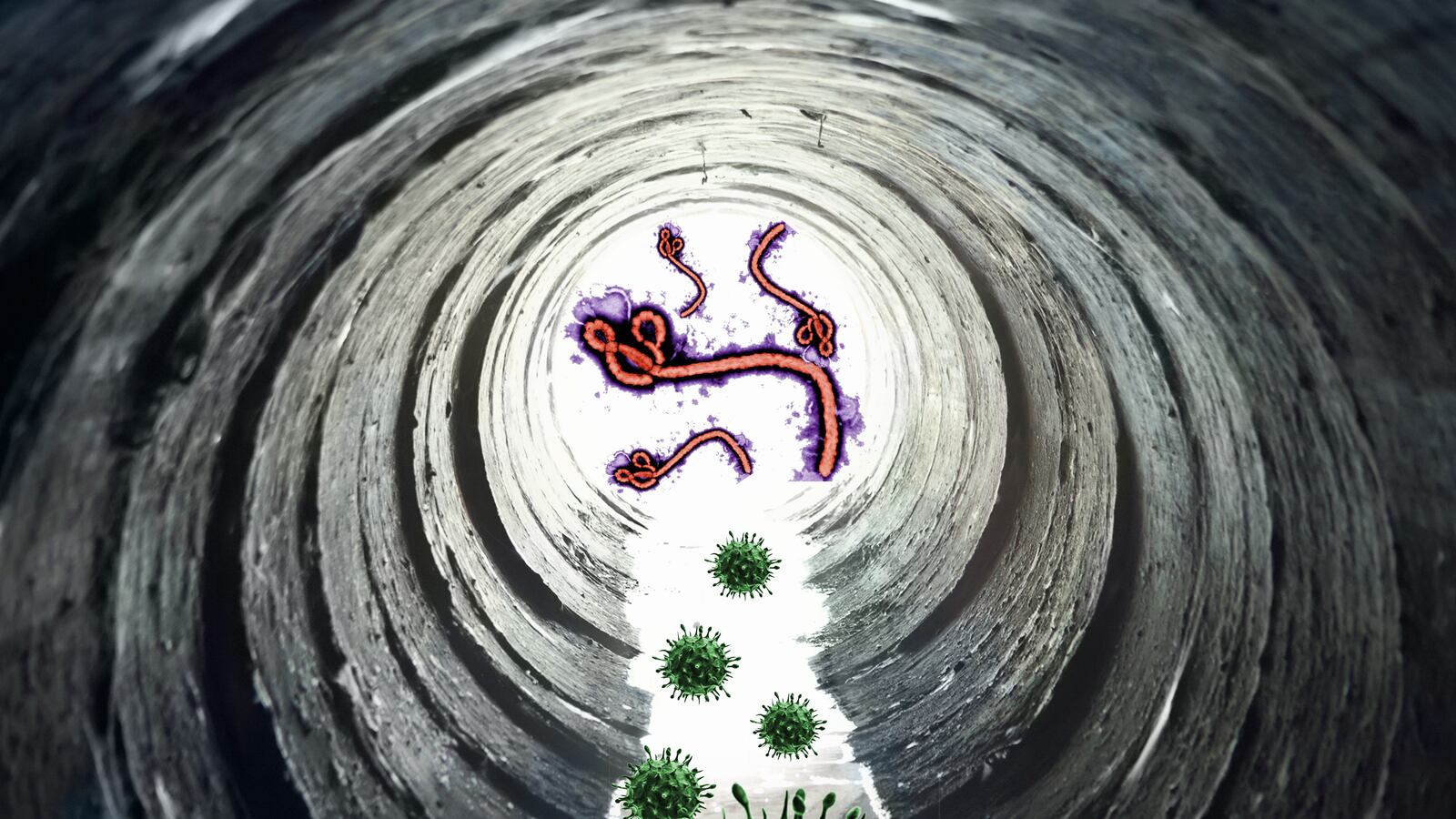If there was a way to track the transmission of pathogens that cause diseases such as Ebola, MERS, or the flu, where could we do so? Eric Alm, a professor of microbiology at MIT, has an idea: use the sewers.
While we may think that planes, trucks, and cars constitute the bulk of what’s moving in and out of the city, it may be both surprising and obvious to hear that the bulk of mass coming in and out of a city on any given day is actually water. For the enormous quantities of clean water that are piped in, an equal amount of sewage is piped out. “Almost all of our human activities leave a chemical trace in the water,” says Alm. “There’s an enormous richness of information by looking in the water that’s indicative of what’s going in a city in a real-time fashion. We want to tap into that source of information and develop it into an information platform.”
Yaniv Jacob Turgeman, a graduate student at MIT and a lead researcher in the Alm and Senseable City Labs, refers to the sewage project as “Underworlds.” He describes the sewage system of a city to be analogous to the urban gut, hosting the microbiome of the city.
“The sewage system is the world underneath the one we inhabit and interact. Its infrastructure aggregates our collective metabolic activities, and is a waste stream rich with biomedical information that can be useful from a public health perspective,” Turgeman says. “Just as how our nervous systems sense our information in our gastrointestinal tract, Underworlds aims to extend the ability to understand our health by sensing the gut of the city.”
So, by going into the belly of the beast of any given city, we can ultimately determine what diseases are being spread, what drugs are being used, and what people are eating.
Currently, real-time surveillance systems of disease do not exist. At best, the flu is tracked on platforms set up by the CDC, which reports cases of the flu only after someone has gone to see the doctor. State and public health agencies work similarly, but nothing is reported in real-time. FluTrends shows us where people in the U.S. are Googling flu symptoms, but that doesn’t truly give insight into real-time transmission. HealthMap has been used previously to track diseases such as H1N1 and dengue fever by scouring social media and local news from across the world to pinpoint hotspots and display them on an interactive map. Despite these valiant efforts, nothing comes quite as close as to the system MIT wants to develop to forecast disease transmission before people start Googling disease symptoms and start seeing physicians.
Last year, the Underworlds team conducted pilot studies in the city of Boston, bringing back over 10 liters of sewage into the lab.
“We’re a poop-only lab,” says Alm, “So none of this grossed my lab out.”
The early, exploratory phase of Underworlds demonstrated that viruses like the flu and human bacteria were actually detectable in sewage. These preliminary results give us hope that the project will succeed in the coming years.
Underworlds is receiving a $4 million dollar grant from the Kuwait government, via the Kuwait-MIT collaboration, to investigate the use of sewers as an “urban laboratory.” Since there’s little precedent research on detecting disease in sewers, aside from the promising early studies from last year, this project is admittedly risky. With the funding, key graduate student researchers Turgeman and Mariana Matus are leading the more routine testing of sewers in the Cambridge area, in collaboration with the Cambridge Public Health Department.
Not only will this project be useful in the context of tracking disease, but smart sewers can also provide us information if new public health policies are having the intended effect without decades of research. For example, Kuwait recently put a limit the allowable amount of sodium in bread to lower blood pressure. Instead of conducting a longer-term, more expensive 4-8 year study, identifying ‘high blood pressure’ signatures in the sewage can give us insight that would be difficult to obtain. Bacteria and other metabolites correlated with obesity and/or malnutrition can also be determined after extensive research, and the levels of these bacteria could be active tracked in real-time with a system like Underworlds.
Before we’re able to live in a world where sewers are smart enough to tell us about the dietary habits and epidemiology of a city, an enormous amount of work must be first done by hand. Starting out, the Underworlds team must decide how to make the information provided by sewage meaningful: How can we determine population size from sewage? What specific bacteria and viruses can be detected in the sewage? And, when is the best time to sample?
About a century ago, sewer systems were still yet to be streamlined: an unexpected efflux of sewage during a heavy rainfall drained into a dam in Ithaca, NY, causing over one thousand town residents to come down with typhoid fever. Today, sewage overflow is rarely an issue in developed cities. It’s exciting to think that in perhaps merely 20 years, we can have smart sewers telling us more information than we’d care to know, like what you ate—and how much—at your Thanksgiving dinner.





